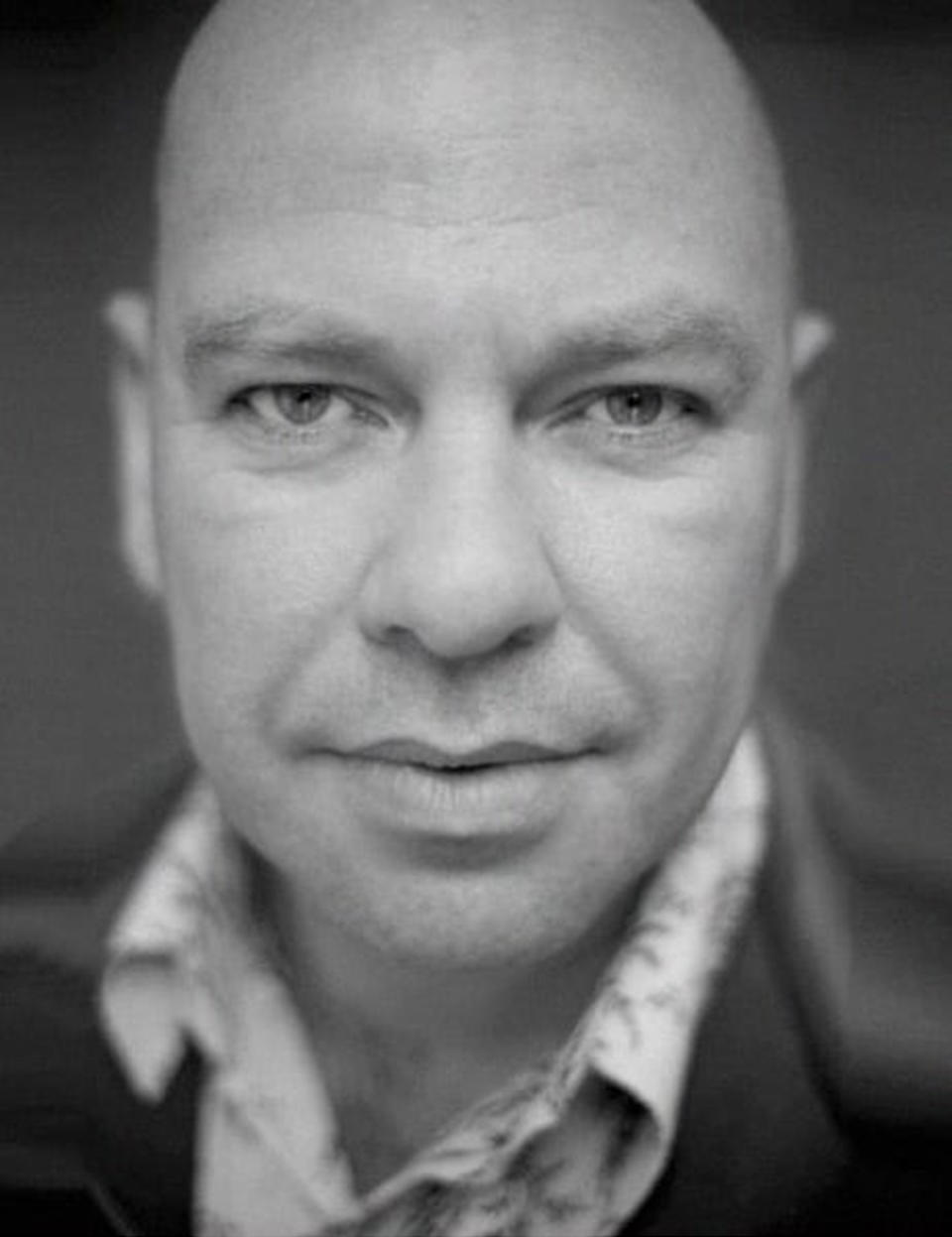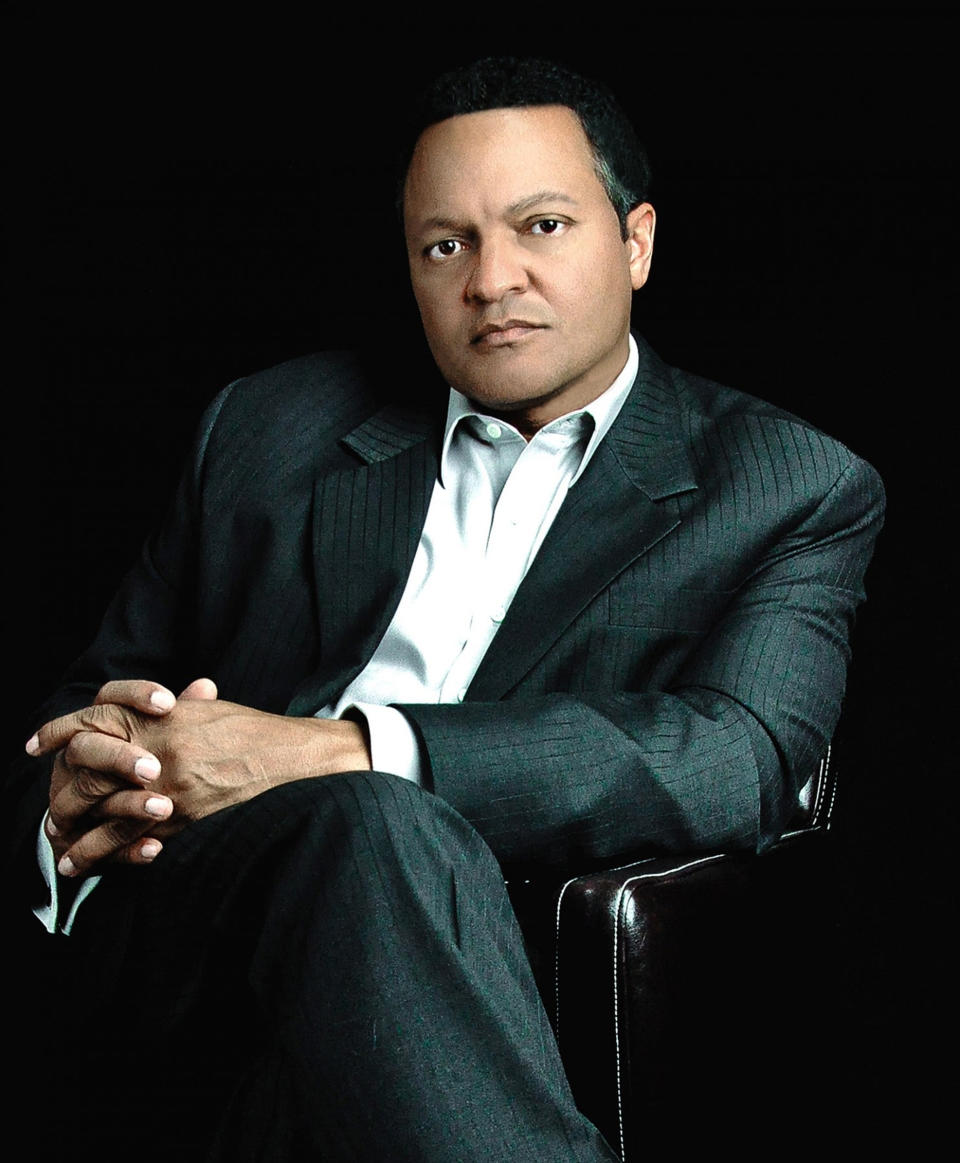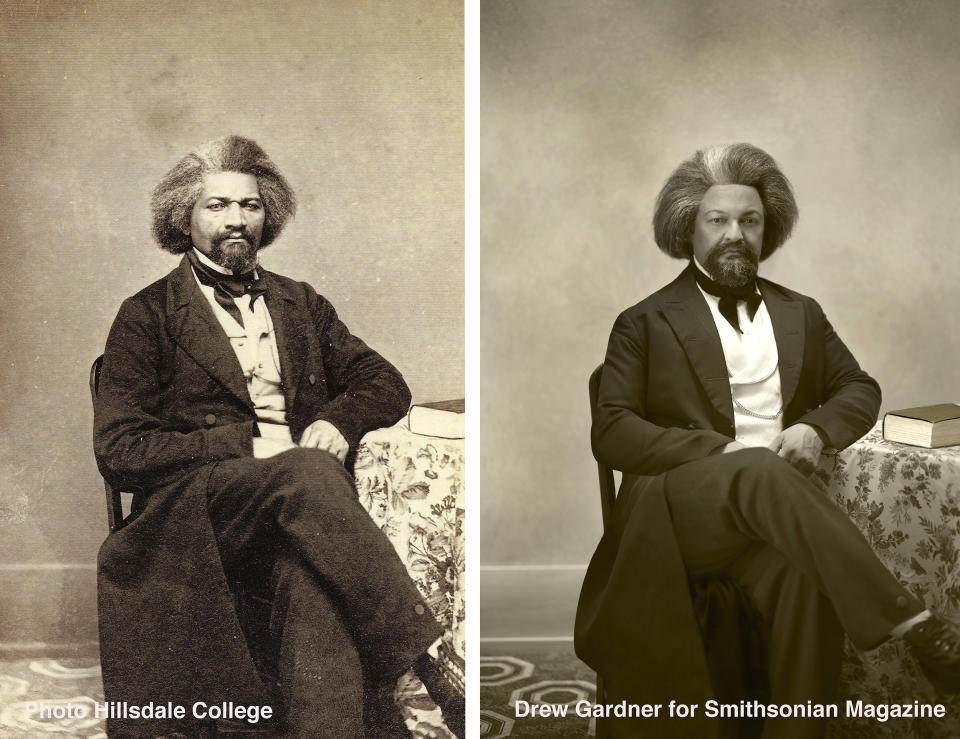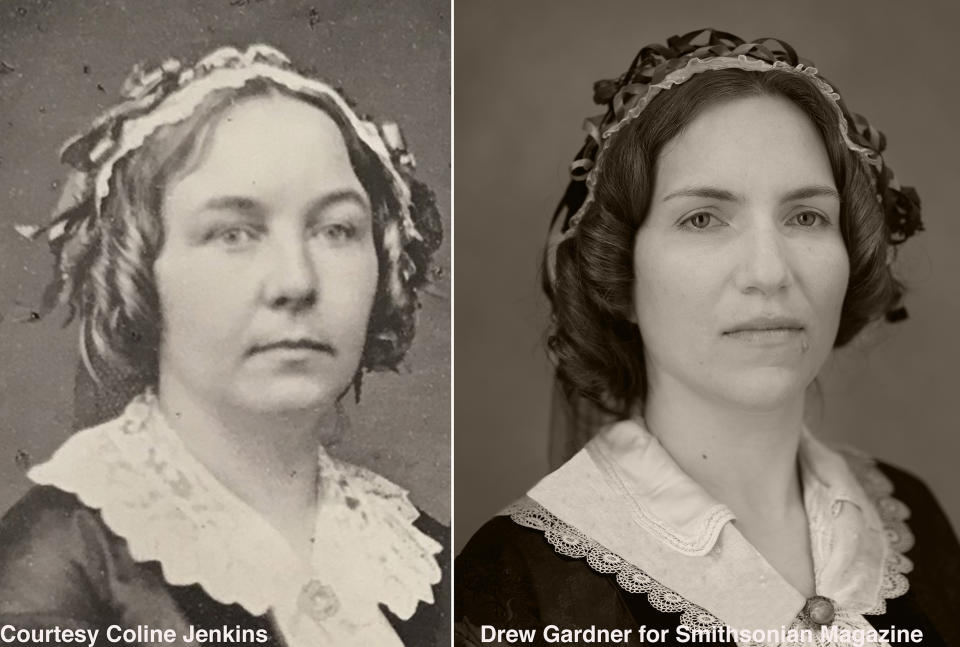Photographer shows descendants of historical figures aren't all 'white males'
When Smithsonian magazine published a series of portraits in July featuring descendants of famous historical figures alongside their forebears, the reaction was swift, with readers expressing both praise and surprise.
One of the portraits is of Shannon LaNier, a Black descendant of former President Thomas Jefferson. Jefferson is known as one of the authors of the Declaration of Independence but not as many people might know about his legacy as the owner of 600 enslaved people and the father of Black children.
Watch TODAY All Day! Get the best news, information and inspiration from TODAY, all day long.
"Wow that's crazy and interesting at the same time. I learned something new today," wrote one commenter after LaNier shared a video clip of the portrait series on his Instagram page.
LaNier, 41, a news anchor in Houston, is Jefferson’s sixth great-grandson and a descendant of Jefferson and Sally Hemings, one of the hundreds Jefferson enslaved. He wrote in his Instagram caption, "The @smithsonianmagazine is helping hold a mirror to #America & reflect how #President #ThomasJefferson not only took part in creating this country but also it's people... black, white, brown, yellow & red!"
Although he wore a period outfit to resemble his ancestor, LaNier chose not to wear a wig for his portrait. It's a choice British photographer Drew Gardner, who shot the portraits, told TODAY he could understand.
"I kind of understood where he was coming from," Gardner said. "He felt very uneasy about dressing up to look like somebody who had used his (slave). She was 16 when he started sleeping with her, maybe even younger who knows. If you're a slave, you have no right to decline sexual attraction or sexual advances, you couldn't say no as a woman or a man."
Gardner, 55 and a photojournalist-turned-photographer, started his "Descendants" project about 15 years ago. Fueled by his passion for history, he said he wanted to "tell stories of the past beautifully" and started focusing on famous British and European subjects. But, he recalled, “one day, I was looking at the sets of photographs and I just kind of felt very uncomfortable that there were no faces of color, there were no Black people in there.

"So I stopped to look around and America is going through a lot of change at the moment,” he said. “That got me thinking more because in the past 200 years, so many Americans of color have achieved so many different things ... this could be the time to do an American version ... to show that history isn't necessarily white males, that history is diverse."
The feature in the July/August issue includes portraits of three Americans: LaNier, Kenneth B. Morris, Jr. and Elizabeth Jenkins-Sahlin. Morris is a descendant of abolitionist Frederick Douglass and is his third great-grandson, while Jenkins-Sahlin is a descendant of suffragist Elizabeth Cady Stanton and is her third great-granddaughter.
The final presentation showcases each descendant side by side with their ancestor. The descendants are dressed in period costume and each portrait re-creates a historical painting or vintage photograph, illustrating striking resemblances and modern-day differences between each ancestor and descendant.
In an email, Gardner explained how he came to choose the three American figures. “The Jefferson family, I had been aware of for around 5 years and it has always interested me, Frederick Douglass was such a remarkable man and he is still not very well known in the U.K. and Elizabeth Cady Stanton ... was such an early women rights activist (predating the U.K. Pankhurst family by 80-ish years).”

For Kenneth B. Morris, Jr., one of the co-founders and president of the nonprofit Frederick Douglass Family Initiatives, his response was not an immediate yes when Gardner approached him with the project.
"When I was growing up, I didn't really embrace my heritage a whole lot and there were a lot of reasons for that," Morris, 58, explained. "I'd seen what the pressure had done to those that had came before me. And also, I think my parents made a concerted effort to not put any pressure on me to try and live up to these two great heroes." (Morris is also a descendant of educator Booker T. Washington.)
He eventually came around to Gardner's idea. "It was a combination of his extraordinary talent and being able to re-create these portraits and Smithsonian (getting) involved for me to say, 'OK, this is, this is something that I can really get behind.'"

Morris wore a custom wig in addition to a full outfit for his portrait and focused on channeling his ancestor for the project. "Frederick Douglass is known for his hair and he was very deliberate. He was deliberate in the way he presented himself through pictures. He was the most photographed American of the 19th century."
As for the timing of the release of "The Descendants" project, following the rise of the Black Lives Matter movement, Morris said, "I think it's an excellent point and the timing, I don't think is coincidental and it's not by accident.
"This country obviously is very divided right now. And people ask me all the time, 'What do you think Frederick Douglass would do or say if he were here today?' and it's really hard to answer that question because nobody really knows, but because his blood flows through my veins, I do take some liberty and I would say, he, I'm sure would be happy to see that the country had elected an African American president."
Morris added, "There's still so much work to do, but I've always felt like (Douglass') spirit lives in all of us. And I believe that he could be a unifying spirit, for what we're going through right now."

Elizabeth Jenkins-Sahlin, 35, who sat for Gardner's re-creation of Elizabeth Cady Stanton, was also hesitant to participate when Gardner reached out to her with his idea, but later changed her mind.
She told TODAY via email, "Once I saw Drew Gardner's work and understood his vision and saw the image of Elizabeth Cady Stanton that he had selected, I realized that it was up to me to represent for my family and that it was important for me to do so. I did not want to be the reason that Elizabeth Cady Stanton was not included in the project or the reason that the project did not include any famous historical figures from the women's rights movement in the United States."

Jenkins-Sahlin wore her hair in curls, a white blouse and blazer instead of a full outfit for her headshot. She wrote that she hopes "the image of Elizabeth Cady Stanton circa 1854 and the image of me at the age of 35 will serve as a reminder that women of all ages have shaped this nation’s history and that it’s never too early or too late to get involved, take a stand, and to shape history."
The choice to include both Douglass and Stanton is particularly interesting as the two activists were alive during the same time period and even became friends for some time. Morris and Jenkins-Sahlin touched on this friendship in a behind-the-scenes video for Smithsonian. They pointed out that Stanton and Douglass both attended the first women's rights convention in Seneca Falls, New York, in 1848, and Morris recounts how Douglass helped Stanton advocate for the inclusion of women’s suffrage in the Declaration of Sentiments.
But later on, Stanton’s views on women’s rights came to usurp her view on suffrage for others, including Black people, pitting her against her former friend. In a 2011 interview, Lori Ginzberg, a historian and a professor of history and women's studies at Penn State University, said, “She also descended to some rather ugly racist rhetoric along the lines of, 'We educated, virtuous white women are more worthy of the vote.' ... She talked about how much worse Black men would be as voters than the white women about whom she was concerned, and she was really quite dismissive of Black women's claims.”
In response, Gardner wrote in an email to TODAY, “We are all flawed and many, if not all of the historic figures, whom I have portrayed have made some big mistakes in their lives with serious consequences for others and taken actions which had a profound impact on many which was not always positive but for good or ill, they have shaped our history. For me, it is learning from their mistakes and hopefully growing. My intention is to encourage debate on this and ultimately encourage a curiosity in the past.”
Gardner said the "Descendants" will continue with more historical figures from other countries and likely "follow me into the grave." After all, he said, "it's the most popular thing I've ever done."

